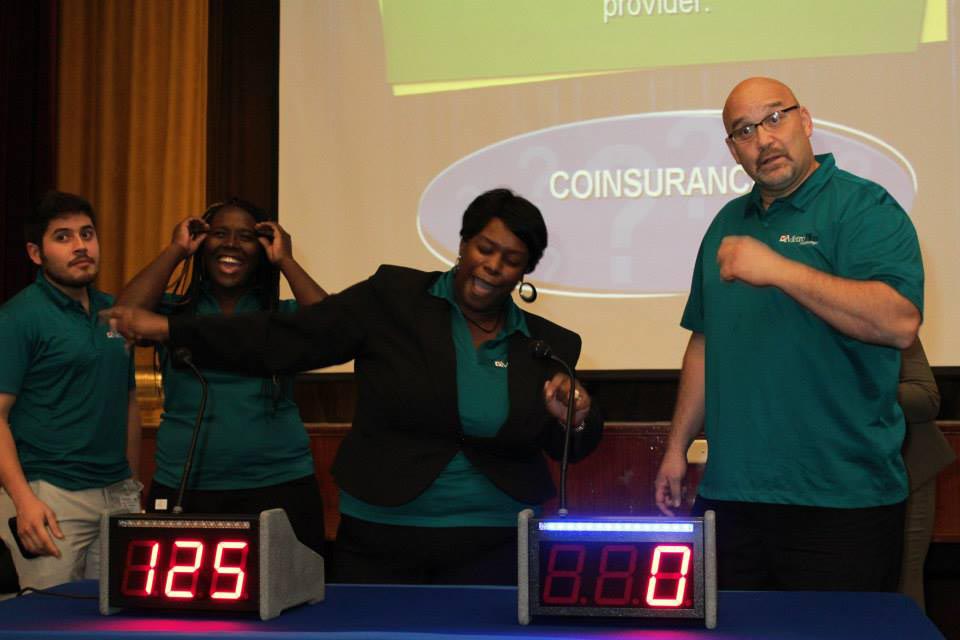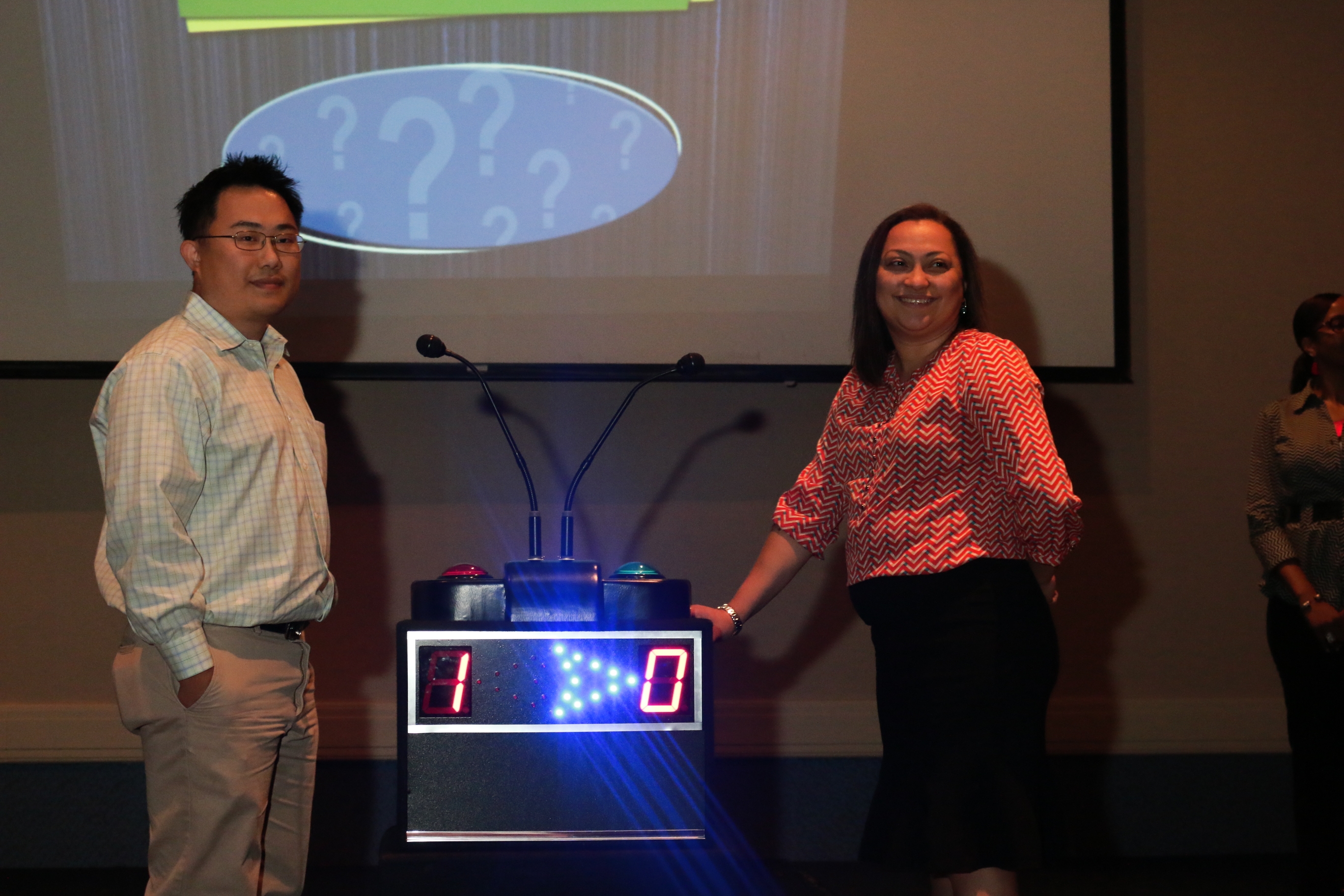Did you know that burnout costs companies in the United States an estimated $125 billion to $190 billion per year in healthcare spending?
As a leader, you understand the importance of maintaining a productive and engaged team.
However, the pressures of a fast-paced work environment can often lead to burnout, impacting both team synergy and individual well-being. That’s where team building comes in.
Team building activities can play a crucial role in preventing burnout and promoting entrepreneurial success.
By promoting trust, improving communication, and enhancing creativity, team building initiatives create a collaborative work environment that supports the overall well-being of your team members.
In this article, we will explore the various strategies and tips for team building to prevent burnout, helping you build a resilient and motivated team that is ready to tackle any challenge.

stay motivated at work
>>>Click here for fun team building game ideas to prevent burnout.
Key Takeaways:
- Burnout costs companies in the United States billions of dollars each year in healthcare spending.
- Team building activities are essential for preventing burnout and promoting entrepreneurial success.
- By fostering trust, improving communication, and enhancing creativity, team building initiatives create a collaborative work environment.
Understanding Burnout and Its Impact on Teams
Burnout is a pervasive issue that can have detrimental effects on teams in the workplace. When individuals experience burnout, it not only affects their own well-being but also impacts the overall functioning and productivity of the team.
Understanding the causes and consequences of burnout is essential in order to prevent it and create a healthy, collaborative work environment.
Burnout prevention involves various strategies, such as stress relief and fostering a collaborative work environment.
By addressing the underlying causes of burnout and promoting well-being, teams can thrive and achieve long-term success.
Stress relief is an important aspect of burnout prevention. High levels of stress can lead to physical and mental exhaustion, making individuals more susceptible to burnout.
Implementing stress relief strategies, such as mindfulness exercises, relaxation techniques, and time management practices, can help team members manage their stress levels and prevent burnout.
The Impact of Burnout on Teams
Burnout affects not only the individuals experiencing it but also the team as a whole. When team members are burned out, their motivation, engagement, and productivity decline.
This can lead to decreased collaboration, communication breakdowns, and a negative work atmosphere.
A study conducted by Harvard Business School found that burned-out employees are 63% more likely to take a sick day and 2.6 times more likely to actively seek a new job.
These negative outcomes can have a significant impact on team performance and organizational success.
“Burnout is like a wildfire that spreads quickly within a team. It can extinguish creativity, hinder problem-solving, and create a toxic work culture if left unaddressed.” – Jane Thompson, HR Manager
Creating a collaborative work environment is crucial for burnout prevention. When team members feel supported, valued, and engaged, they are more likely to thrive and contribute to the team’s success.
Collaborative work environments foster open communication, trust, and cooperation, which are essential for preventing burnout and promoting overall team well-being.
>>>Click here for fun team building games to boost morale.
By understanding the impact of burnout on teams and implementing strategies for prevention, organizations can create a healthier and more productive work environment.
The next section will delve deeper into the role of team building in preventing burnout and enhancing team performance.
The Role of Team Building in Preventing Burnout
Team building plays a crucial role in preventing burnout among individuals in the workplace.
By incorporating team-building activities and implementing a wellness program, organizations can promote team well-being and create a positive work environment that helps prevent burnout.
Team-building activities provide an opportunity for team members to bond, collaborate, and develop strong relationships.
These activities can range from outdoor adventures to problem-solving exercises, allowing team members to work together towards a common goal.
By participating in these activities, team members can strengthen their communication skills, enhance trust, and foster a sense of belonging.
Wellness programs can also play a significant role in preventing burnout. These programs usually include activities that promote physical and mental well-being, such as yoga classes, meditation sessions, and stress-relief workshops.
By prioritizing the overall well-being of team members, organizations can create a supportive environment that prevents burnout by allowing individuals to recharge and rejuvenate.
Implementing team-building activities and wellness programs can yield several benefits. Firstly, these activities promote team synergy, which is essential for entrepreneurial success.
When team members have strong relationships and effective communication, they can collaborate more effectively and achieve better outcomes.
Secondly, participating in team-building activities and wellness programs helps reduce stress levels and prevent burnout.
By engaging in activities that promote relaxation, team members can manage stress more effectively and maintain a healthy work-life balance.
Moreover, team-building activities and wellness programs contribute to the overall well-being of individuals within the organization.
When team members feel supported and valued, they are more likely to be motivated, engaged, and productive.
By prioritizing the well-being of the team, organizations can create a positive work culture that fosters individual growth and prevents burnout.
Remember, a healthy and motivated team is essential for long-term success.
Investing in regular team-building activities and wellness programs, organizations can cultivate a positive work environment that prevents burnout and promotes overall team well-being.

>>>Click here for fun team building game ideas to prevent burnout.
Benefits of Team Building and Wellness Programs:
- Enhanced team synergy and collaboration
- Reduced stress levels
- Prevention of burnout
- Improved communication and trust
- Promotion of overall well-being and work-life balance
- Increased motivation and productivity
- Creation of a positive work culture
Investing in team-building activities and wellness programs is not just a means of preventing burnout in the workplace; it is a strategic move towards fostering team synergy, individual well-being, and long-term success.
| Team Building Activities | Wellness Program Initiatives |
|---|---|
| Outdoor team challenges | Yoga classes |
| Escape room experiences | Meditation sessions |
| Team-building workshops | Stress-relief workshops |
| Collaborative problem-solving exercises | Healthy cooking classes |
Building Trust through Team-Building Activities
Trust is the foundation of any successful team. Without trust, communication falters, collaboration suffers, and burnout becomes more prevalent.
That’s why building trust among team members should be a top priority. One effective way to build trust is through hosting regular team-building activities.
These activities will break down barriers, encourage open communication, and create a sense of camaraderie.
Let’s see how team-building activities can help build trust and strengthen your team.
The Power of Trust-Building Initiatives
Trust-building activities are designed to bring team members together in a relaxed and informal setting.
By engaging in activities outside of work, individuals have the opportunity to connect on a personal level and build bonds of trust.
These activities can range from outdoor challenges and problem-solving exercises to team sports and volunteer work. The common thread is that they all promote collaboration, communication, and mutual respect.
“Team-building activities allow team members to see each other in a different light. They help break down barriers and foster a sense of trust and understanding.
As a result, communication improves, conflicts are resolved more effectively, and the team becomes more resilient.”
– Emily Davis, HR Manager at XYZ Corporation
Benefits of Trust-Building Activities
Engaging in trust-building activities can yield a multitude of benefits for both individuals and the team as a whole. Here are some key advantages:
- Enhanced Communication: Trust-building activities provide opportunities for open and honest communication, which leads to better teamwork and faster problem-solving.
- Increased Collaboration: When team members trust each other, they are more likely to collaborate effectively, share ideas, and work towards common goals.
- Improved Conflict Resolution: Trust creates a safe environment for addressing conflicts and finding mutually beneficial solutions.
- Boosted Morale: Participating in enjoyable activities outside of work can boost team morale and create a positive work atmosphere.
Implementing Trust-Building Activities
When planning trust-building activities, consider the interests and preferences of your team members. Aim for a diverse range of activities that cater to different personalities and skill sets. Here are a few examples:
- Escape Room Challenge: Put your team’s problem-solving skills to the test in an interactive escape room experience.
- Outdoor Adventure: Organize a hiking trip, a camping weekend, or a team-building ropes course to build trust through shared challenges.
- Volunteer Work: Give back to the community by participating in volunteering activities as a team.
Remember, the key is to create an inclusive and enjoyable experience that encourages team members to interact and connect. This will lay the foundation for building trust and strengthening your team.
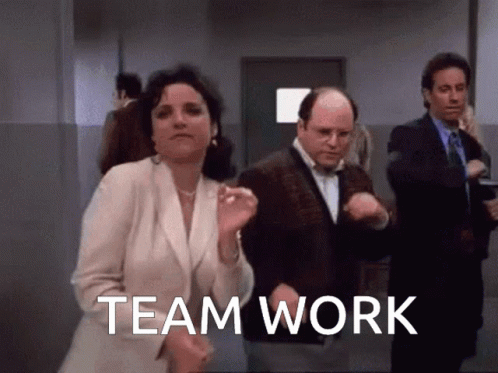
Teamwork Makes The Dream Work
>>Click here for fun team building games to prevent burnout.
Improving Communication for Burnout Prevention
Effective communication plays a crucial role in preventing burnout and fostering a harmonious work environment.
When team members can communicate openly and honestly, it enhances collaboration, builds trust, and reduces stress levels.
One way to improve communication within a team is through regular team-building activities.
These activities provide opportunities for team members to interact in a relaxed setting, enhancing their understanding of each other’s communication styles and preferences.
Team-building activities such as role-playing exercises or icebreaker games can help break down barriers and facilitate open communication.
Furthermore, establishing clear and transparent channels of communication is essential. This can be achieved through the implementation of digital tools like project management software or instant messaging platforms.
By providing a centralized platform for communication, team members can easily share information, ask questions, and provide updates.
Another strategy to improve communication is to encourage active listening. This ensures that team members fully understand each other’s perspectives, ideas, and concerns.
Active listening involves giving undivided attention, using non-verbal cues, and asking clarifying questions to demonstrate genuine interest and understanding.
“Good communication is the bridge between confusion and clarity.”
Open and honest communication helps prevent misunderstandings, minimizes conflicts, and promotes a supportive team culture.
By improving communication within a team, not only can burnout be prevented, but team members also feel more connected and supported.
This leads to a positive work environment where ideas flow freely, problems are solved collaboratively, and trust is strengthened.

Fun-Team-Building-Events
The Benefits of Improved Communication:
- Enhanced collaboration and teamwork
- Reduction in misunderstandings and conflicts
- Increased trust and confidence among team members
- Greater support and understanding within the team
- Improved problem-solving and decision-making abilities
Enhancing Creativity and Innovation through Team-Building Activities
In a highly competitive business landscape, enhancing creativity and innovation is crucial for staying at the forefront of industry advancements.
One effective way to foster a creative and innovative environment within a team is through engaging team-building activities.
These activities not only promote trust-building and enhance team synergy but also provide a platform for individuals to think outside the box and generate fresh ideas.
Team-building activities can help unleash the creative potential of team members by encouraging collaboration and problem-solving in a non-traditional setting.
They provide an opportunity for individuals to step out of their comfort zones and engage in activities that stimulate their creativity.
Whether it’s a brainstorming session, a hands-on project, or a creative challenge, these activities push team members to explore new perspectives and push the boundaries of conventional thinking.
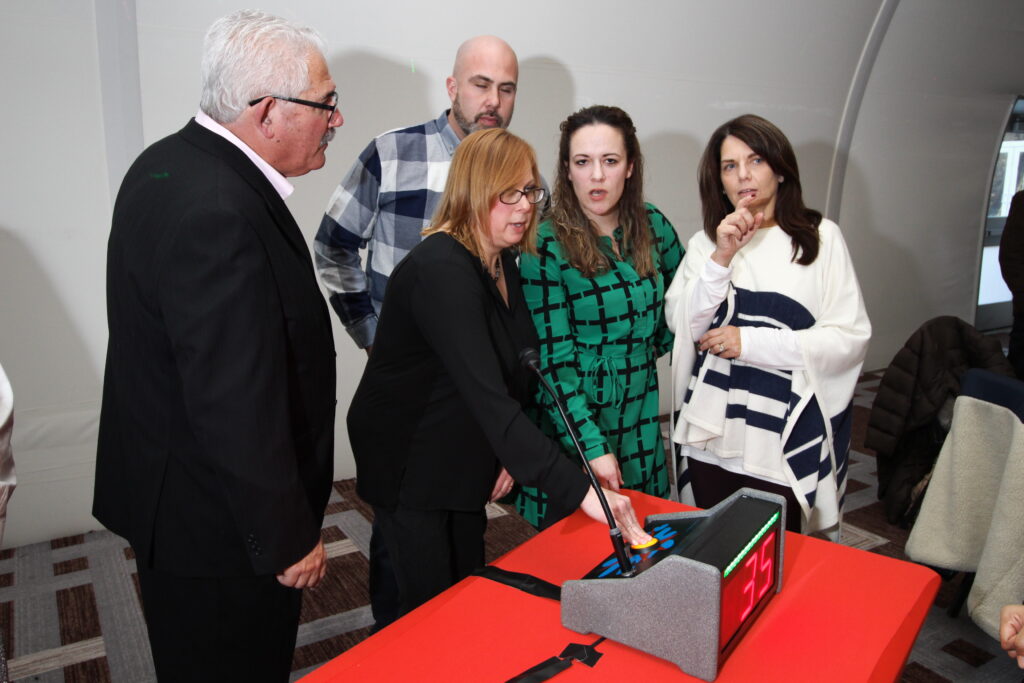
>>>Click here for fun team building game ideas to prevent burnout.
Trust-building is a critical component of fostering creativity and innovation. When team members feel supported and trusted, they are more likely to take risks and share their unique ideas without fear of judgment or criticism.
Team-building activities provide a space where trust can be built organically as individuals collaborate, communicate, and work towards a shared goal.
Through these activities, team members get to know each other on a deeper level, develop mutual respect, and build a foundation of trust that ultimately facilitates the creative process.
“Team-building activities create an environment that nurtures trust, encourages collaboration, and enhances creativity, setting the stage for innovative breakthroughs.”
Furthermore, team-building activities can break down barriers and hierarchies within a team, allowing everyone to contribute their insights and ideas on an equal playing field.
This inclusive approach not only fosters a sense of belonging but also empowers individuals to express their creativity without inhibitions.
By valuing and appreciating the diverse perspectives and talents of team members, organizations can leverage their collective creativity to drive innovation and stay ahead of the curve.
Got Games? – Press Play! #boostmorale #teambuilding
![]()
Book a live game show experience today!
Contact us for further details.
For Immediate assistance by text – 917-670-4689
No deposit required. 5 Star Google Reviews.
We plan and facilitate all activities.
Promoting Healthy Competition for Motivation and Engagement
Healthy competition plays a vital role in preventing burnout and fostering motivation and engagement within a team.
When incorporated into team-building activities, healthy competition can create a dynamic and energizing environment that encourages individuals to strive for excellence.
By channeling their competitive spirit in a positive and constructive manner, team members can push their limits and achieve new levels of performance.
Team-building activities that promote healthy competition not only add excitement and fun to the workplace but also stimulate creativity and collaboration.
When individuals compete against each other in a supportive and respectful way, it can lead to increased productivity and the generation of innovative ideas.
Furthermore, healthy competition fosters a sense of accountability and ownership over one’s work, as individuals strive to outperform themselves and their peers.
A key aspect of promoting healthy competition is to ensure fairness and transparency. Team leaders should establish clear rules and guidelines for competitions, guaranteeing equal opportunities for all participants.
By creating a level playing field, team members can fully engage in the competition without worries of bias or favoritism. This fosters a sense of trust and fairness, strengthening team dynamics and promoting a healthy competitive spirit.
Examples of Healthy Competition
Here are a few examples of team-building activities that incorporate healthy competition:
- Treasure Hunt: Divide team members into groups and challenge them to solve riddles and find hidden clues. The group that successfully discovers the treasure within a specified time wins.
- Trivia Challenge: Organize a trivia quiz with questions related to the team’s work or industry. Teams compete against each other to test their knowledge, and the team with the highest score emerges as the winner.
- Escape Room: Take the team to an escape room, where they have to work together to solve puzzles and escape within a given timeframe. The team that completes the challenge in the shortest time wins.
These activities not only encourage healthy competition but also foster teamwork, communication, and problem-solving skills. They provide an opportunity for team members to bond, support each other, and celebrate collective achievements.
Healthy competition is like a fuel that drives individuals to push their boundaries and excel. It creates a positive work culture where team members support and motivate each other to reach new heights of performance.
By incorporating healthy competition into team-building activities, organizations can propel their teams toward success while preventing burnout.
To further illustrate the importance of promoting healthy competition, consider the following table:
| Benefits of Healthy Competition | Examples |
|---|---|
| Increased motivation and engagement | Teams competing to achieve sales targets |
| Enhanced creativity and innovation | Design teams competing to come up with the most innovative product ideas |
| Improved collaboration and teamwork | Departments competing to complete a cross-functional project |
| Stronger individual and team performance | Employees competing for recognition and rewards |
As demonstrated in the table, healthy competition can lead to a wide range of benefits, including increased motivation, enhanced creativity, improved collaboration, and stronger individual and team performance.
By leveraging healthy competition through team-building activities, organizations can create a positive and thriving work environment that not only prevents burnout but also drives success.

Stress Relief and Mental Wellness in Team Building
When it comes to preventing burnout and fostering a healthy work environment, stress relief and mental wellness are key considerations.
Team-building activities can play a crucial role in providing much-needed stress relief and promoting mental well-being among team members.
By incorporating stress-relieving activities into team-building initiatives, organizations can create a supportive and positive atmosphere that enhances overall team synergy and prevents burnout.
One effective strategy for stress relief during team-building activities is to incorporate mindfulness exercises.
These exercises encourage individuals to focus on the present moment, reducing stress and promoting a sense of calm.
Meditative practices such as deep breathing exercises and guided relaxation techniques can help team members alleviate tension and recharge their mental and emotional state.
Another approach to stress relief is to incorporate physical activities into team-building events. Engaging in sports, outdoor adventures, or physical challenges can help team members release built-up stress and tension.
Physical activity stimulates the production of endorphins, which are known to boost mood and relieve stress. This not only enhances team well-being but also strengthens collaboration and team bonds.
Incorporating fun and laughter into team-building activities is also essential for stress relief.
Light-hearted games, ice-breakers, and team challenges that encourage humor and moments of levity can act as stress relievers by promoting positive emotions and reducing tension.
Laughter has been proven to reduce stress hormones and improve overall well-being, making it a powerful tool for preventing burnout.
Team-building activities that focus on self-care and self-reflection can also contribute to stress relief and mental wellness.
Providing team members with opportunities to explore their personal values, set boundaries, and prioritize self-care can empower them to manage stress effectively.
Activities such as journaling, gratitude exercises, and goal setting can foster a sense of purpose and balance, contributing to overall well-being.
Building Mental Resilience through Team Building
Team building not only provides stress relief but also helps team members develop mental resilience.
By engaging in challenges and problem-solving activities together, individuals can enhance their coping mechanisms and learn to navigate stress more effectively.
This builds their ability to bounce back from adversity, making them more resilient in the face of burnout-inducing situations.
Additionally, team-building activities that focus on trust-building and open communication can contribute to mental resilience.
Cultivating a safe and supportive environment where team members feel comfortable sharing their struggles and seeking help can reduce the negative impact of stress and prevent individuals from reaching a point of burnout.
>>>Click here for fun team building game ideas to prevent burnout.
Creating a Collaborative Work Environment for Burnout Prevention
A collaborative work environment plays a critical role in preventing burnout and fostering a healthy and productive team dynamic.
When team members feel supported, valued, and connected, they are more likely to experience job satisfaction and lower levels of stress.
Building trust and establishing effective communication channels are essential elements of a collaborative work environment that promotes mental well-being and prevents burnout.
One strategy to foster collaboration and trust-building is to establish regular team-building activities.
These activities allow team members to interact in a non-work setting and build stronger relationships.
By engaging in team-building exercises, such as problem-solving challenges or group workshops, individuals can develop a sense of camaraderie and mutual support.
This, in turn, creates a more positive and cohesive work environment.
“A collaborative work environment not only boosts team morale but also enhances overall productivity and innovation.” – John Stevens, HR Manager
Implementing collaborative tools and platforms can also facilitate communication and collaboration among team members.
Platforms like project management software or collaborative document-sharing tools enable seamless information exchange, promote transparency, and streamline workflows.
By using these tools, teams can effectively collaborate on tasks and projects, reducing miscommunication and fostering trust.
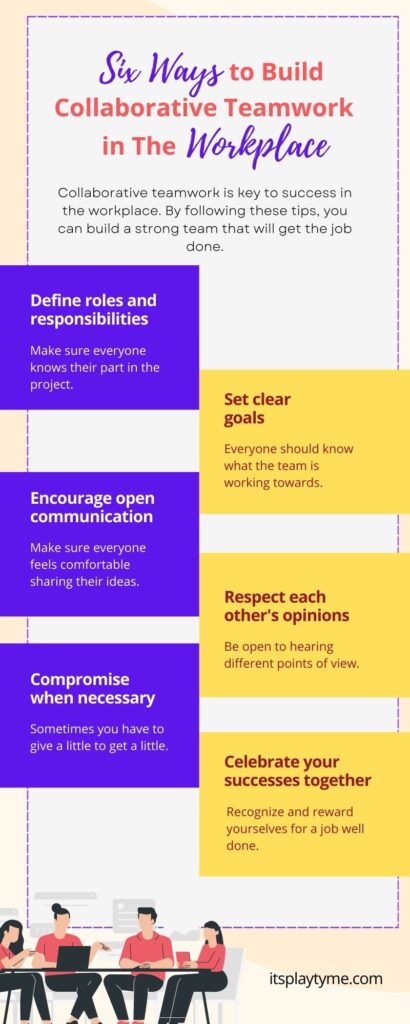
Collaborative Teamwork Infographic
>>>Click here for fun team building game ideas to prevent burnout.
Benefits of a Collaborative Work Environment:
- Improved team synergy and cooperation
- Enhanced creativity and innovation
- Increased trust and mutual respect
- Open and transparent communication
- Reduced stress and burnout
Comparison of Collaborative vs. Non-Collaborative Work Environments
| Factors | Collaborative Work Environment | Non-Collaborative Work Environment |
|---|---|---|
| Team Morale | High | Low |
| Communication | Open and frequent | Limited and sporadic |
| Creativity and Innovation | Encouraged and nurtured | Stifled and inhibited |
| Trust and Cooperation | Strong and well-established | Weak and fragmented |
| Stress and Burnout | Reduced | Increased |
A collaborative work environment creates a foundation for team success, enabling individuals to thrive personally and professionally.
By fostering trust, enhancing communication, and promoting a sense of unity, organizations can prevent burnout and create a supportive ecosystem for their teams.
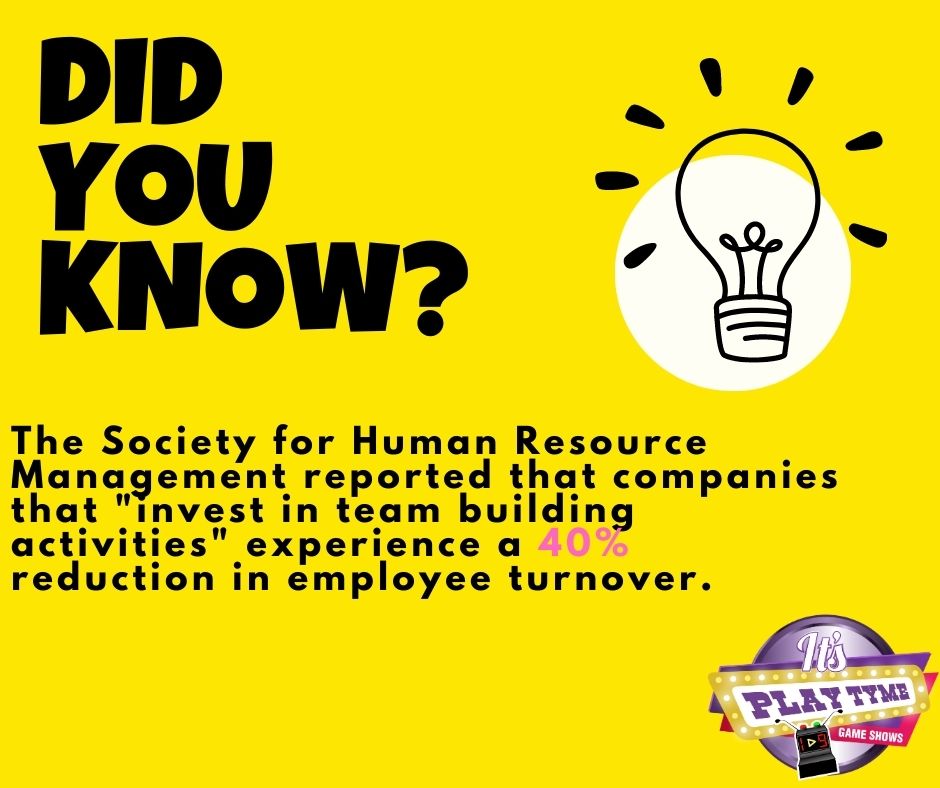
Employee turnover
Implementing a Wellness Program for Team Well-Being
I firmly believe that the well-being of the team plays a crucial role in preventing burnout and fostering a positive work environment.
One effective way to promote team well-being is by implementing a comprehensive wellness program.
A wellness program not only addresses physical health but also focuses on mental and emotional well-being, creating a holistic approach to team wellness.
A well-designed wellness program should include a variety of team-building activities, as they have proven to be instrumental in building strong relationships, improving communication, and enhancing team cohesion.
These activities can range from workshops on stress management and mindfulness techniques to outdoor retreats that encourage team bonding and collaboration.
Components of a Wellness Program
A successful wellness program encompasses various components that contribute to team well-being. Here are some key areas to consider:
- Physical Fitness: Promote physical health through activities such as yoga classes, team sports, or even offering gym memberships.
- Mental Health: Provide resources for mental health support, such as access to counseling services or workshops on managing stress and building resilience.
- Work-Life Balance: Encourage a healthy work-life balance by implementing flexible work hours, remote work options, and encouraging employees to take regular breaks.
- Diet and Nutrition: Offer healthy food options in the workplace and organize educational sessions on nutrition and healthy eating habits.
- Recognition and Rewards: Recognize and celebrate team achievements to foster a positive work environment and boost morale.
A well-structured wellness program can significantly contribute to preventing burnout and creating a positive work culture that supports the overall well-being of the team.
Benefits of a Wellness Program
Implementing a wellness program within your organization brings a multitude of benefits:
- Improved Team Morale: When employees feel supported and cared for, their morale and job satisfaction increase.
- Increased Productivity: By prioritizing team well-being, you create an environment that nurtures productivity and creativity.
- Reduced Absenteeism and Turnover: A wellness program can help decrease absenteeism and turnover rates as employees feel more valued and satisfied.
- Enhanced Team Bonding: Team-building activities included in the program foster stronger relationships among team members, resulting in improved collaboration.
- Prevention of Burnout: By addressing the root causes of burnout, such as stress and work overload, a wellness program ensures a healthier and more sustainable work environment.
“A wellness program not only promotes team well-being but also contributes to the overall success of the organization. Investing in the health and happiness of your team pays off in the long run.”
By implementing a well-rounded wellness program, organizations can create an environment where team members thrive both personally and professionally. Take the initiative to invest in your team’s well-being, and reap the rewards of a motivated, engaged, and resilient workforce.
| Wellness Program Components | Benefits |
|---|---|
| Physical Fitness | Enhances physical health and energy levels |
| Mental Health | Reduces stress, boosts mental resilience, and promotes emotional well-being |
| Work-Life Balance | Improves job satisfaction and reduces burnout by fostering a healthy work-life integration |
| Diet and Nutrition | Supports healthier eating habits and overall well-being |
| Recognition and Rewards | Boosts morale and reinforces a positive work culture |
Implementing a wellness program demonstrates a commitment to the well-being of your team. By creating an environment that prioritizes team health and happiness, you can prevent burnout, enhance productivity, and foster a positive and resilient team culture.
Strategies for Boosting Team Morale and Resilience
In order to prevent burnout and create a collaborative work environment, implementing effective team-building activities is essential. These activities not only boost team morale but also enhance team resilience, allowing individuals to thrive in a supportive and engaging atmosphere.
One of the key strategies to foster team morale is to provide opportunities for team members to bond and connect with each other. This can be accomplished through team-building activities such as outdoor adventures, group projects, or even social events. By engaging in these activities, team members can develop stronger relationships, trust, and camaraderie, which in turn contributes to a positive work environment.
Another important aspect to consider is promoting open communication within the team. Encouraging team members to share their thoughts, ideas, and concerns facilitates collaboration and prevents misunderstandings. This can be achieved by organizing regular team meetings, creating a safe space for open discussions, and implementing feedback mechanisms.
Furthermore, incorporating wellness initiatives into team-building activities is crucial for preventing burnout and ensuring individual well-being. This can include activities such as mindfulness sessions, yoga classes, or healthy cooking workshops. By prioritizing mental and physical wellness, teams can maintain a healthy work-life balance and reduce stress levels.
Effective team-building activities create a collaborative work environment where team members feel supported, valued, and motivated to excel.
They not only prevent burnout but also foster a sense of belonging and unity within the team.
To enhance team resilience, it is important to provide opportunities for skill development and growth. This can be achieved by organizing training workshops, educational programs, or individual coaching sessions. By investing in their personal and professional development, team members become more adaptable and better equipped to handle challenges that may arise.
Lastly, celebrating achievements and recognizing individual and team successes is vital for maintaining team morale and resilience. This can take the form of employee recognition programs, team outings, or quarterly awards ceremonies. By acknowledging and appreciating the efforts and contributions of team members, a sense of pride and motivation is fostered.
In conclusion, implementing strategies to foster team morale and resilience through team-building activities is key to preventing burnout and creating a collaborative work environment. By promoting open communication, prioritizing wellness, supporting skill development, and recognizing achievements, teams can thrive and achieve long-term success.
Final Takeaways
Team building plays a crucial role in preventing burnout and boosting morale within an entrepreneurial setting.
By fostering team synergy and promoting individual well-being, businesses can achieve long-term success while ensuring their team members’ mental and emotional health.
Throughout this article, we have explored various strategies and tips for implementing effective team-building activities to prevent burnout.
Building trust, improving communication, enhancing creativity, promoting healthy competition, and providing stress relief are all key components in maintaining a positive and collaborative work environment.
Additionally, implementing a wellness program and creating a supportive work culture further contribute to the prevention of burnout.
Taking the time to invest in team well-being not only improves productivity but also strengthens team relationships and resilience in the face of challenges.
By prioritizing team building and incorporating these strategies into your entrepreneurial journey, you can create a harmonious and motivated team that thrives both individually and collectively.
Remember, team building is not just a one-time event, but an ongoing process that requires dedication and commitment to ensure lasting success and prevent burnout.
Start implementing these strategies today and witness the positive impact it has on your team and overall business performance.
FAQ – Team Building in Preventing Burnout
What is the role of team building in preventing burnout?
Team building plays a crucial role in preventing burnout by fostering a collaborative and supportive work environment. It promotes trust-building, enhances communication, and encourages creativity and healthy competition among team members.
How can team-building activities help build trust among team members?
Team-building activities provide opportunities for team members to get to know each other better, work together towards common goals, and develop mutual understanding and respect. These activities help build trust by promoting open communication and fostering a sense of unity and camaraderie within the team.
What strategies can improve communication within a team to prevent burnout?
To improve communication within a team and prevent burnout, it is important to encourage active listening, provide regular feedback, promote transparency, and establish clear channels of communication. Team-building activities that focus on effective communication can also be beneficial in enhancing collaboration and reducing stress.
How can team-building activities enhance creativity and innovation within a team?
Team-building activities can enhance creativity and innovation within a team by providing an opportunity for team members to think outside the box, explore new ideas, and collaborate in a supportive environment. These activities promote trust-building and encourage free expression of ideas, leading to increased creativity and innovation.
How does healthy competition in team-building activities contribute to preventing burnout?
Healthy competition in team-building activities can contribute to preventing burnout by boosting motivation and engagement among team members. It encourages them to strive for excellence, set and achieve goals, and support each other’s growth. Healthy competition promotes a positive work atmosphere and helps prevent burnout caused by monotony and lack of motivation.
How can team-building activities provide stress relief and promote mental wellness?
Team-building activities that focus on stress relief can provide a much-needed break from work-related pressures and help team members relax and recharge. These activities can include mindfulness exercises, outdoor team-building challenges, or wellness workshops. By promoting mental wellness, team-building activities contribute to preventing burnout and fostering a healthy work environment.
What strategies can be implemented to create a collaborative work environment for burnout prevention?
To create a collaborative work environment for burnout prevention, it is important to encourage teamwork, promote open communication, and provide opportunities for team members to collaborate and share ideas. Trust-building activities, team-building exercises, and fostering a supportive work culture can also contribute to creating a collaborative work environment.
How can a wellness program contribute to team well-being and prevent burnout?
A wellness program can contribute to team well-being and prevent burnout by promoting physical and mental wellness. This can include activities such as yoga or meditation sessions, wellness challenges, or mental health workshops. By prioritizing team well-being, a wellness program helps create a supportive and healthy work environment.
What are some strategies for fostering team morale and resilience to prevent burnout?
To foster team morale and resilience and prevent burnout, team-building activities that promote teamwork, recognition, and appreciation can be implemented. Building a collaborative work environment, providing opportunities for professional development, and encouraging work-life balance are also effective strategies for boosting team morale and promoting resilience.

